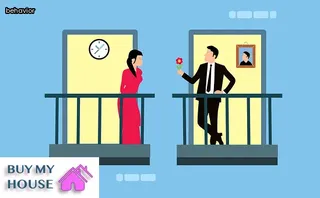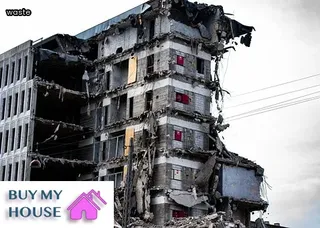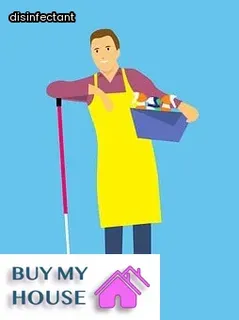Hoarding disorder is a complex mental health condition that can have devastating physical and emotional consequences. It is characterized by the difficulty of discarding possessions, which results in an accumulation of clutter in the home or workplace.
The signs and symptoms of hoarding disorder may vary slightly from person to person, but some common signs include excessive acquisition of items, difficulty organizing possessions, and strong emotional attachments to objects. Hoarders often experience overwhelming anxiety when attempting to discard items and may become overwhelmed by the amount of clutter in their living space.
Other signs of hoarding disorder include avoiding visitors due to embarrassment about the clutter in their homes, becoming socially isolated, exhibiting compulsive buying behaviors, and struggling with decision making when it comes to discarding possessions.

Hoarding disorder is a complex condition with numerous underlying causes. Genetics, environment, and psychological factors all contribute to the development of hoarding behavior.
Research suggests that genetics may be a factor in some cases, as hoarding tendencies can run in families. Environmental factors such as a traumatic event or significant life change can also trigger compulsive hoarding.
Additionally, people with mental health issues such as depression and anxiety are more likely to hoard items, suggesting a possible link between hoarding and psychological distress. Although it's not clear why some individuals develop hoarding disorder while others do not, understanding the potential causes can help us better comprehend this condition and provide more effective treatment for those affected by it.
Hoarding disorder is a serious mental health condition that can have serious consequences for those affected and their families. It’s important to assess the impact of hoarding before attempting to clean out a hoarder house, as it can be overwhelming and potentially dangerous without the proper understanding of what’s involved.
Hoarding disorder is often characterized by an inability to discard items, even if they are no longer necessary or useful, and can lead to cluttered and unsanitary living conditions that can put the individual at risk for physical harm. Hoarders may also experience social isolation, depression, and anxiety due to the shame associated with their living conditions.
In some cases, hoarding can become so severe that it requires professional intervention in order to ensure safety and proper care. Assessing the impact of hoarding is essential for developing a step-by-step guide for cleaning a hoarder house, as it provides an understanding of how best to help individuals suffering from this disorder while minimizing any potential risks or hazards.

When it comes to dealing with hoarding, it can be a difficult and daunting task. It is important to understand what hoarding disorder is and how it affects the individual so that you can work together to create a more organized and safe living environment.
Developing strategies for overcoming hoarding difficulties is key in successfully cleaning out a hoarder house. This process requires patience, understanding and communication.
Start by creating a plan of action that will include small steps and goals for both the hoarder and the helper. These goals should be achievable with realistic timelines, such as sorting items into piles of keep, donate/sell or throw away.
Additionally, providing emotional support throughout the process can help alleviate any stress or anxiety the hoarder may feel while going through their belongings. It is also beneficial to take breaks during this long process and celebrate small wins along the way to maintain motivation.
Ultimately, having an understanding of hoarding disorder combined with tactful strategies can make cleaning out a hoarder house much less overwhelming for everyone involved.
When it comes to treating hoarding disorder, there are a variety of effective methods available. Cognitive-behavioral therapy (CBT) has been proven to be one of the most effective treatments for those suffering from this mental health condition.
It focuses on helping individuals identify and manage underlying thought patterns that lead to hoarding behaviors, while also providing skills and strategies to manage the urge to accumulate. Additionally, medications may be used in conjunction with CBT to help regulate emotions, reduce anxiety levels and improve decision making capabilities.
Support groups can also provide a safe environment for hoarders to share their experiences with others who have similar struggles. These groups often offer helpful advice on how to better cope with the disorder and create an understanding community for those affected by it.
Finally, family members and friends can play a crucial role in helping those suffering from hoarding disorder by providing love and support throughout the treatment process.

Hoarding is a serious mental disorder that can cause significant risks to both the individual and their environment. Hoarders are at risk of physical injury due to clutter, tripping hazards, falling items and blocked access to exits.
Structural damage can occur as a result of overburdened shelving units and floors. Fire hazards may also be posed by blocked pathways and excess combustible materials.
Hoarders are also at risk for social isolation due to embarrassed about their living conditions and the judgement of others. Poor hygiene can lead to infestations of vermin, bacteria and mold, presenting health risks such as respiratory infections, skin irritations and gastrointestinal disorders.
Stress levels are often high for hoarders due to the overwhelming nature of their surroundings, leading to anxiety and depression. Professional help should be sought when attempting to clean a hoarder's house in order to ensure safety for all involved and an optimal outcome for the affected individual.
When it comes to helping someone with hoarding disorder, emotional support is just as important as practical help. It is essential for a hoarder and their loved ones to understand that hoarding is a recognized mental health disorder, and not just an obsessive-compulsive behavior.
The first step in providing emotional support to someone suffering from hoarding disorder is understanding the condition – its causes, effects, and how it can be treated. This includes being aware of the individual's unique situation and understanding that there may be underlying causes for the disorder such as trauma or stress.
Once these are understood, it's important to provide reassurance that help is available and that recovery is possible. Additionally, offering non-judgemental empathy can go a long way in helping someone feel less alone and more open to getting help – whether through therapy or other treatments.
It's also essential to create a safe space where they feel comfortable talking about their feelings without fear of judgement or criticism. Finally, having patience throughout the process and providing consistent emotional support can be invaluable in helping someone on the path towards recovery from hoarding disorder.

Many people assume that clutter and hoarding are interchangeable terms when in fact they describe two distinct phenomena. Clutter is defined as an excessive accumulation of objects that fill a living space, while hoarding disorder is a mental health condition characterized by the persistent difficulty of discarding or parting with possessions regardless of their value.
It is essential to recognize the difference between these two concepts in order to effectively help individuals suffering from hoarding disorder. For instance, it can be challenging for individuals with this condition to identify which items should be kept and which should be discarded since they attach emotional significance to them.
In addition, hoarders tend to experience anxiety when asked to discard items, whereas those who simply accumulate clutter may not have such strong feelings attached to their belongings. With an understanding of the differences between clutter and hoarding, it is possible to create a targeted step-by-step strategy for cleaning out a hoarder house, taking into account its unique needs.
When dealing with a hoarding situation, one of the most important steps to take is to establish boundaries and set goals. It's essential to be realistic when setting these boundaries and goals since hoarding disorder can't simply be solved overnight.
Establishing clear expectations and guidelines for the hoarder is key in helping them take control of their disorder. Take into consideration their own feelings and preferences as well as the health and safety of everyone involved during this process.
Some suggested steps that can help include breaking down large projects into smaller tasks, setting specific time frames for completing each task, providing rewards for achieving milestones, and having regular check-ins with the hoarder. Understanding hoarding disorder and its underlying causes is also critical when it comes to properly addressing issues associated with hoarding.
Being aware of what motivates hoarders will help identify areas that need to be addressed in order for progress to be made. Additionally, seeking support from family members or professionals may be beneficial in providing guidance on how to best approach these situations.

Creating an action plan for a successful clean up process is essential when it comes to tackling a hoarder house. Hoarding disorder is an increasingly common mental health condition, and it can be very difficult to help someone in that situation.
It is important to understand the underlying causes of hoarding before attempting to organize and clean the hoarder house. An effective action plan should involve creating achievable goals, breaking down tasks into manageable steps, and having a clear timeline for completion.
By taking these steps into consideration, it will help ensure that the clean up process runs smoothly and results in a tidy living space for those affected by hoarding disorder.
When approaching a hoarder house, it is important to understand the mental disorder of hoarding. Hoarding disorder is a serious condition in which an individual accumulates an excessive amount of items and may be unable to discard them, even if the items are broken or have no use.
It is not uncommon for hoarders to experience emotional distress and anxiety when faced with discarding possessions. In cases where the hoarding has become severe and is causing safety risks or health issues, professional help should be accessed.
Professional help may include a mental health counselor, support groups and programs such as cognitive-behavioral therapy (CBT). These interventions can help those suffering from hoarding disorder gain insight into their behavior and provide strategies for coping with their symptoms.
Additionally, family members of hoarders can benefit from resources that will guide them on how best to support someone dealing with this condition.

Cleaning a hoarder house is a daunting task and requires a great deal of patience. Determining the appropriate timeframes for a clean up intervention is essential to ensure the safety of everyone involved.
The first step in determining an appropriate timeframe is understanding hoarding disorder. Hoarding disorder is a mental health condition that causes individuals to acquire and keep large amounts of items, even if it has no value or use.
The compulsive behavior can lead to hazardous living conditions, safety risks, and serious financial problems. Therefore, it’s important to assess the severity of the situation before attempting a clean up intervention.
This includes evaluating the physical environment, assessing how much clutter there is in each room, and determining what items need to be removed first to make the environment safe. It’s also important to consider the emotional state of the individual with hoarding disorder when creating a timeline for cleaning up their home.
If they are feeling overwhelmed by the process, it may be beneficial to take breaks throughout the day or break down tasks into smaller steps that are more manageable. With an understanding of hoarding disorder and an appropriate timeframe for cleanup intervention, individuals can create a plan for helping those with hoarding disorder get back on track towards healthy living conditions.
Creating a home inventory list prior to beginning the clean up process for a hoarder house is an important step in understanding hoarding disorder. It not only helps to organize the possessions in the home, but it also provides insight into the individual’s habits and mental state.
Before beginning the cleaning process, it’s important to go through each space of the home and make a list of all items within each room. This includes furniture, appliances, clothes, books, collections and other miscellaneous items that may be present.
Doing so allows for a comprehensive overview of what needs to be done before beginning the clean up process and can help with sorting out which items should stay or go. It can also provide helpful clues as to why the individual has been collecting certain items or how they are using their space.
Additionally, having a record of all items can make it easier when looking for lost or misplaced objects while cleaning up. Asking questions about each item on the list can be beneficial in understanding why it is being kept and how it fits into the person’s life story.
Having an inventory list will provide an organized structure for beginning a successful clean up process for a hoarder house and help provide valuable information about hoarding disorder.

When dealing with a home that has been taken over by hoarding, safety hazards must be addressed. It is essential to understand the underlying cause of hoarding, which is often a mental disorder known as hoarding disorder, in order to properly assist those affected and make the home safe for everyone.
Hoarding disorder can cause a person to accumulate large amounts of items and become overwhelmed by their possessions, resulting in severe clutter and disorganization. This created environment can lead to potential safety hazards such as blocked exits, fire hazards from flammable materials, mold growth from excessive moisture, and dangerous pathways through narrow spaces.
To help reduce these risks, it is important to create a step-by-step plan for cleaning the hoarder house safely. This could include removing hazardous items first, setting up storage solutions for items that cannot be discarded right away, using specialized cleaning products for difficult messes, and finally organizing any remaining items in the home.
With this approach, it is possible to make the home safe again while providing support and understanding to those affected by hoarding disorder.
After tackling the daunting task of cleaning out a hoarder house, it is important to stay organized and maintain an orderly living space. A great way to start is by creating a plan for organizing and categorizing items in your home.
Set aside time each day to clean up and arrange things so that you can find them more easily. Take extra care to put away any items that could become hazardous or create clutter.
If you are short on storage space, consider investing in furniture pieces with multiple compartments or drawers that can help keep things neat and tidy. Additionally, think about donating items that don't have sentimental value or no longer serve a purpose in your home.
Finally, be sure to practice regular decluttering habits; take some time each week to organize one room at a time. Hoarding disorder can be difficult to understand but with proper planning and organization, it's possible to keep an orderly living space after clearing out clutter or excessive items from a hoarder house.

Cleaning a hoarder's house can be an overwhelming task. The process can be physically and emotionally demanding, and it is important to take steps to manage the stress of being involved in this type of intervention.
It is essential to understand hoarding disorder and how it affects the individual before attempting to help them clean their house. Hoarding disorder is a mental health condition marked by difficulty discarding possessions, even when they are no longer useful or wanted.
A key part of managing stress during a clean up intervention is understanding why the person hoards and developing empathy for their situation. When cleaning the hoarder's home, it is important to take breaks, plan ahead, set realistic goals, and break down tasks into manageable chunks.
Creating an organized system for sorting items can also help keep track of what has been discarded and provide structure throughout the process. Additionally, having support from family members or professional help can make the job much easier and less stressful overall.
Dealing with relapse of hoarding can be a difficult and stressful process for both the hoarder and those trying to help. It is important to understand the underlying causes of hoarding disorder, such as depression, anxiety, or obsessive-compulsive behavior, in order to properly address the problem.
Hoarders should be encouraged to recognize and track triggers that lead them to relapse into their hoarding habits. Developing coping strategies such as forming a support network of family and friends who can assist during these times can also be beneficial.
Professional therapy may also be necessary in order to gain insight into the underlying issues contributing to the problem. Once a hoarder has identified ways to cope with their urges, it is essential that they maintain an organized environment with regular cleaning routines so as not to return to their previous chaotic state.

Finding affordable clean up services and equipment for a hoarder house can be a difficult task. Hoarding disorder is a mental health condition that affects people in different ways, but often involves difficulty getting rid of possessions.
To find the best resources for cleaning up a hoarder house, it is important to understand hoarding disorder and how to help those affected by it. Start by researching local charities and organizations that may be able to offer discounts on services or equipment rental.
Next, check online classifieds such as Craigslist or eBay for used items at discounted prices. Finally, consult with professionals such as junk removal specialists or organizational experts who can provide advice on which services are necessary and the most cost effective way to get the job done.
Taking into consideration the special needs of someone with hoarding disorder can greatly reduce costs while still providing an effective solution for cleaning up the home environment.
Decluttering and organizing a hoarder's house can be an emotionally and physically exhausting experience. It is important to understand hoarding disorder and the feelings of anxiety or depression that can arise from attempting to organize a cluttered space.
Developing healthy coping mechanisms is key for dealing with the overwhelming emotions that come with this process. One way to cope is by breaking tasks down into smaller, more manageable steps.
Additionally, establishing goals and focusing on small successes will help motivate you throughout the process. It can be helpful to set aside time each day dedicated solely to decluttering and organizing the space, while also creating specific rewards for yourself when a task is completed.
Finally, it is important to remember that everyone's journey of decluttering and organizing their house looks different; therefore, it is essential to be patient with yourself and take breaks when needed.

When it comes to cleaning a hoarder house, involving family and friends in the process is key. When dealing with hoarding disorder, it is important to remember that this is a mental health issue and not simply a matter of being messy or disorganized.
Having the support of family and friends can go a long way toward helping the individual feel less overwhelmed. It is also important for those assisting to be understanding and patient as it may take some time for the person to sort through items.
It can help to start small by having them choose which items are most important and then slowly working through the rest. Friends and family members should avoid judging any decisions made by the individual, but instead focus on supporting them in their journey towards recovery.
Clearing a hoarder's house can be an overwhelming task. Hoarding disorder is a complex mental health condition that affects many people, and it can be difficult to know what to do when confronted with the challenge of managing someone's home.
To make the process easier, it is important to understand hoarding disorder and how to help those affected by it. This step-by-step guide will provide tips on how to clear a hoarder's house in the safest and most effective way while also respecting the individual's feelings and rights.
First, assess the situation--identify areas of danger or potential harm due to clutter. Next, create an action plan for clearing out the items in the home.
It is important to prioritize safety first and then focus on gradually reducing clutter. Third, establish a system for sorting through items; this could involve categorizing items into keep/toss/donate piles or creating color-coded labels for different categories of belongings.
Finally, enlist help from family and friends who are willing to assist with the cleaning process--this can make all the difference in getting through the job more quickly and efficiently while also providing emotional support for those involved. With proper understanding and planning, clearing out a hoarder house can be done safely and respectfully.

When it comes to hoarding, understanding the disorder is the first step towards helping those affected by it. Hoarding is a mental health issue that affects an individual's ability to discard items, resulting in the collection of large amounts of clutter.
To help those affected by hoarding and make cleaning up hoarder houses easier, it's important to understand the five stages of hoarding. Stage 1: Clutter begins to accumulate as more items are acquired than needed or used over time.
Stage 2: Disorganization begins to occur as piles of clutter begin to form in living spaces throughout the home. Stage 3: Difficulty discarding items becomes apparent as hoarders become overwhelmed with feelings of guilt or anxiety when attempting to get rid of possessions.
Stage 4: A state of chaos ensues as space becomes difficult to navigate due to walls of clutter and hazardous conditions arise from rodent infestations or exposed wires. Stage 5: Agoraphobia sets in as hoarders become isolated from family and friends due to embarrassment and lack of functional living space.
By understanding these five stages, individuals can better assess how severe a hoarder house situation is and develop a plan for cleaning it up in a safe and compassionate way.
The root cause of hoarding can be complex and is not fully understood; however, it is often attributed to a combination of psychological, emotional, and behavioral factors. Hoarding disorder is classified as an anxiety disorder, meaning that those who suffer from it experience extreme distress when asked to part with items.
In many cases, this behavior stems from a deep sense of insecurity or fear of the future. People may also hoard items out of a feeling of responsibility or guilt; they may think that throwing something away would be a wasteful act or that they are doing something meaningful by holding onto possessions.
Additionally, some individuals may have difficulty making decisions or organizing their possessions due to an underlying cognitive impairment. Although there is no single cause for hoarding disorder, it is important to remember that those affected are in need of compassion and understanding as they strive to overcome their challenges.
When it comes to cleaning a hoarder's house, many people are unsure of what to do. Hoarding disorder is a serious mental health issue that affects millions of people around the world and can be hard to understand and handle.
If you find yourself in the situation of needing to clean up a hoarder's house, it is important to take into consideration the situation before taking action. A step-by-step guide for cleaning a hoarded house can help you better understand hoarding disorder and how you can help those affected by it.
This guide should provide practical advice on how to approach cleaning up a hoarder's home safely as well as tips on how to support someone with hoarding disorder during the process. Additionally, this guide will explain why it is important that family members, friends and caregivers take their time when helping someone with hoarding disorder clean up their home.
The key is to make sure that the person with hoarding disorder feels safe and supported throughout the entire process so they can begin making progress towards recovery.